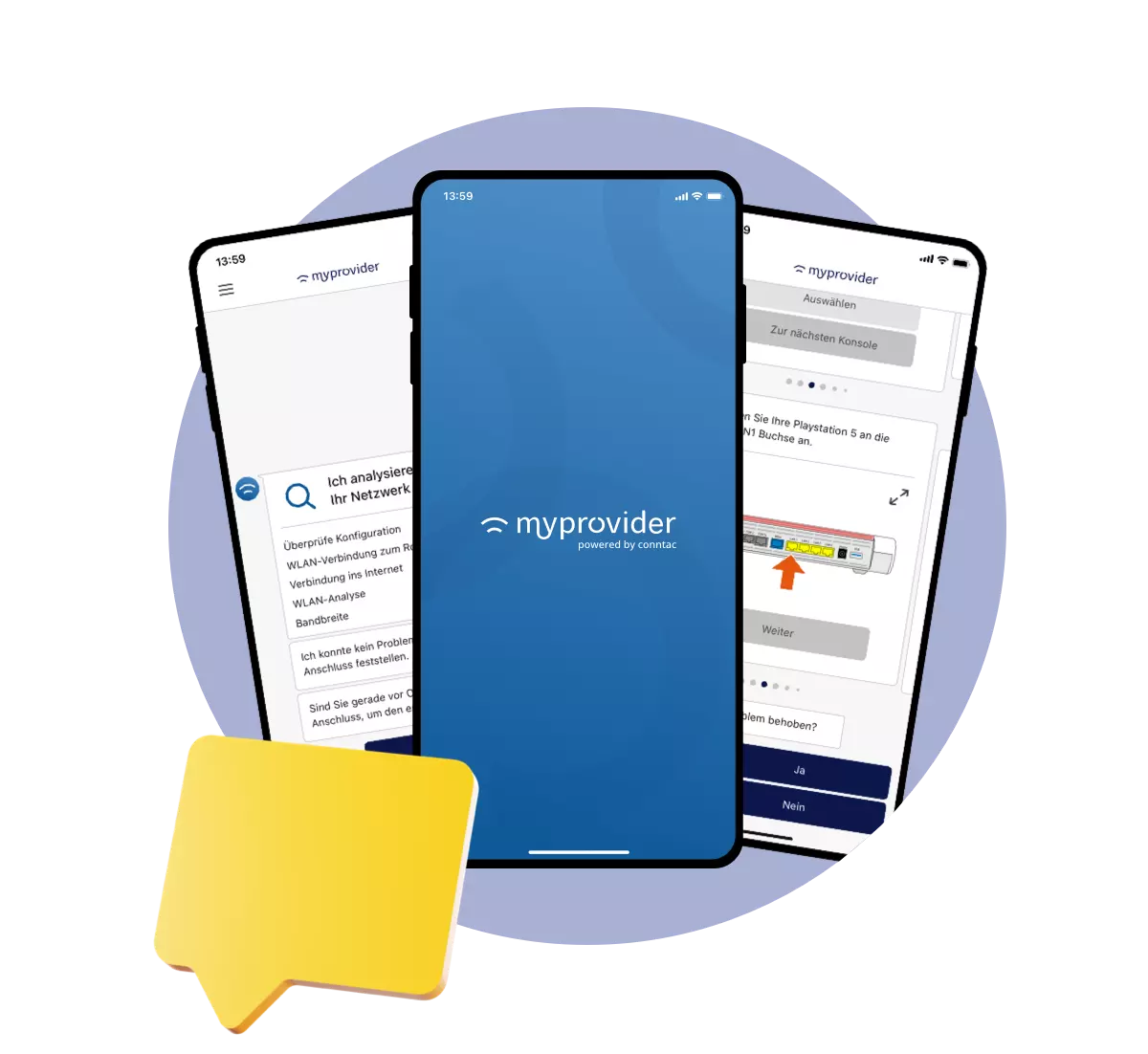When the outage becomes a service experience: Proactive fault reporting as a competitive advantage
A sudden Internet outage – and within minutes, the hotline glows. For many Internet providers, this is everyday life. But what if your customers already knew that a fault was known and when it would be resolved?
This is exactly where it shows how important proactive communication is in customer service. With the feature fault report Internet providers can communicate large-scale or local outages in real time – directly via their self-service app. This creates transparency, relieves the service hotline and strengthens trust in the brand.

Why are proactive fault reporting crucial for Internet service providers?
Whether it's fibre-optic work, maintenance or a spontaneous network failure – disruptions cannot be avoided. The decisive factor is how quickly and clearly you inform your customers.
According to an industry analysis by Mobilise Global, over 85% of customers proactive status updates for telecommunications service providers. If this is not done, the risk of changing the provider increases by around 20%. (Source: Mobilise Global)
With the fault report in the self-service app, customers always stay up to date. You know: The fault is known and my provider is working on a solution. This real-time communication not only reduces calls, but also frustration – and transforms a negative experience into a positive service experience.
More about this topic: Efficient customer service through self-service apps
How does a proactive fault report work in practice?
The feature is part of Conntac Dashboards, the part of MyProvider Self-Service Solution is. Here's how it works in three steps:
1. Manage faults in the dashboard
In the dashboard, faults are created and managed centrally. The message can be narrowed down to regions (e.g. area code) or router models. Only affected customers receive the information – so communication remains relevant and precise.
2. Automatic display in the app
When a customer diagnoses a network fault using the app's troubleshooting feature, a notification about the existing fault report appears automatically. This means that the information ends up exactly where it is needed: at the moment the problem occurs.
3. Push notification when remediated
As soon as the fault is resolved, customers are automatically informed via push notification. This real-time feedback strengthens trust – and drastically reduces the number of support inquiries.

What are the benefits of proactive fault reporting?
- Transparent customer communication: Customers feel informed and taken seriously.
- Relief for support: Reduced ticket and call numbers in the event of large-scale disruptions.
- Targeted information: Only affected customers are notified – no unnecessary communication noise.
- Stronger customer loyalty: Those who provide proactive information increase trust and brand loyalty.
- Data-driven analysis: The dashboard allows you to identify fault patterns and causes – the basis for long-term optimizations.
Another feature that supports your customers and relieves your support: Digital customer portal
Best practice: When information creates trust
Proactive communication has long since become the best practice in customer service. When Internet providers actively inform customers in the event of disruptions – for example via push notifications or notifications in the self-service app – transparency and trust are created.
Instead of generating frustration and repeated hotline calls, such measures can significantly reduce the volume of support. At the same time, customers feel that they are being taken seriously because they know that a solution is being worked on.
The potential is enormous: A potentially negative situation becomes a positive service experience – and thus a clear competitive advantage for modern Internet providers.
Conclusion: Transparency is the best prevention of faults
In short: Proactive fault reporting is much more than just a technical feature – it's a strategic tool for modern ISPs.
If you inform customers in real time, you not only strengthen trust, but also reduce internal costs.
In combination with a Self-Service Solution such as MyProvider communication becomes a real competitive advantage – automated, empathetic and efficient.
FAQ: Common questions about proactive fault reports
How do customers benefit from proactive fault reports?
They know immediately that a fault is known, receive real-time updates and do not have to call a hotline – this saves time and reduces frustration.
How can Internet providers automatically identify faults?
With monitoring systems that check network availability and – in the near future – automatically create fault reports in the Conntac Dashboard.
What role does the self-service app play in communication?
The app is the central communication medium: Customers receive all information about the fault there, can confirm it and are automatically notified when it is resolved.





.webp)


.webp)





